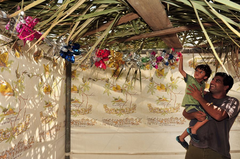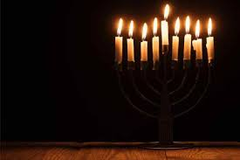Reflections on Tu B'Shevat
01/31/2023 04:16:51 PM
 Just after mid-winter, in January or early February, the Jewish calendar brings us Tu B’Shevat, the "New Year of the Trees." Judaism’s connection to trees is as old as the Torah itself. For example, the tree bearing the knowledge of “good and evil” is a key element in the story of Gan Eden/The Garden of Eden. Later in Genesis, Abraham sits and meditates at the entrance of his tent, at the Eloneh Mamre/The Oaks of Mamre. The Torah itself is called Etz Chayim/The Tree of Life: just as a tree takes root in the earth and grows upward towards the heavens, we too are rooted in the physical world but are called to reach for something higher, to connect with the spiritual realms and to strive for a deeper understanding of the divine. In Kabbalah, Jewish mysticism, “The Tree of Life” is transformed into the cosmic tree of all Being, a metaphor for the divine superstructure of reality.
Just after mid-winter, in January or early February, the Jewish calendar brings us Tu B’Shevat, the "New Year of the Trees." Judaism’s connection to trees is as old as the Torah itself. For example, the tree bearing the knowledge of “good and evil” is a key element in the story of Gan Eden/The Garden of Eden. Later in Genesis, Abraham sits and meditates at the entrance of his tent, at the Eloneh Mamre/The Oaks of Mamre. The Torah itself is called Etz Chayim/The Tree of Life: just as a tree takes root in the earth and grows upward towards the heavens, we too are rooted in the physical world but are called to reach for something higher, to connect with the spiritual realms and to strive for a deeper understanding of the divine. In Kabbalah, Jewish mysticism, “The Tree of Life” is transformed into the cosmic tree of all Being, a metaphor for the divine superstructure of reality.
Scientific understanding about trees is growing in surprising, fascinating ways. Researchers have discovered that trees are linked through an underground grid of fungi through which they exchange water and nutrients with one another. They even use these networks to communicate, sending distress signals, for example, about drought or disease or insect attacks; and other trees actually take protective action when they receive these messages. It’s a stretch to suggest that trees communicate and collaborate like humans. Nevertheless, they certainly  show us that we are not the only species on the planet to be connected in complex and wondrous ways. We have a lot to learn both about them and from them.
show us that we are not the only species on the planet to be connected in complex and wondrous ways. We have a lot to learn both about them and from them.
All the Torah connections to trees (and there are many more!) are just one example of Judaism’s deep awareness of the natural world. We are a people rooted in the earth, connected to the seasons and the environmental cycles of the year. We celebrate spring with Passover and the fall harvest with Sukkot. We pray for rain in its season (from the end of Sukkot to Passover) and dew the rest of the year. We light Hanukkah candles to illuminate the darkest days of the calendar.
 The Jewish connection to the rhythms of the natural world is deeply comforting, which makes it all the more disturbing when it is disrupted by climate change. Our annual cycle of observance is not organized around prolonged drought or devastating fire or destructive downpours. And yet, here we are. We are no longer waiting for the climate crises to arrive: they are here to stay. Our question is not so much when or why but rather how? How can we build resilience to the new challenges we face?
The Jewish connection to the rhythms of the natural world is deeply comforting, which makes it all the more disturbing when it is disrupted by climate change. Our annual cycle of observance is not organized around prolonged drought or devastating fire or destructive downpours. And yet, here we are. We are no longer waiting for the climate crises to arrive: they are here to stay. Our question is not so much when or why but rather how? How can we build resilience to the new challenges we face?
Science can help us in some ways, if we work collectively. But what can we learn from our Tradition that will help us meet the promise of the future? This season of Tu B’Shevat, the birthday of the trees, is a time to honor our Tradition’s deep connection to them. They say King Solomon knew the language of trees as did the Baal Shem Tov as well. Perhaps, like me, you’ve heard a tree speak to you as well! Maybe it’s time we start to listen…to learn…and to take action.



